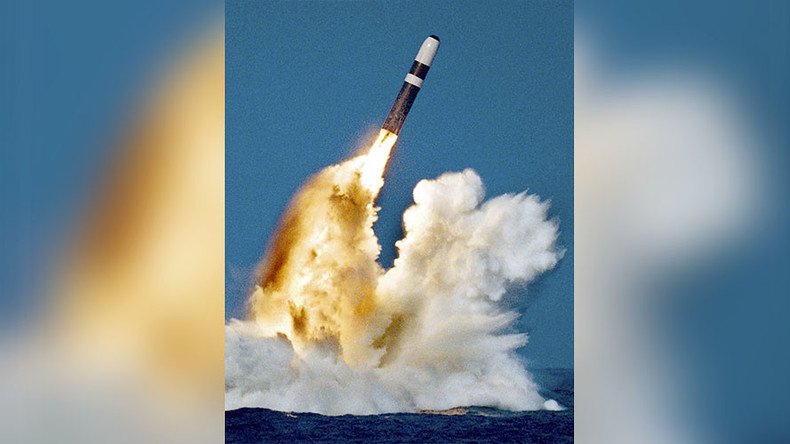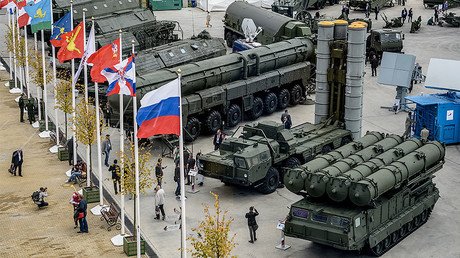US Congress orders review of Russian & Chinese leadership’s nuclear strike ‘survivability’

The US Congress has directed intelligence agencies and the Pentagon’s Strategic Command to evaluate the ‘survivability’ of Russian and Chinese leaders in the event of a nuclear strike on their aboveground and underground defense facilities.
The comprehensive study will be carried out by the US intelligence agencies as well as the Strategic Command, which is in charge of the American nuclear forces. They will evaluate whether the Russian and Chinese leadership could survive a nuclear attack and continue to operate in a post-strike environment, according to a little-reported section of the 2017 National Defense Authorization Act (NDAA).
The review will include “an identification of which facilities various senior political and military leaders of each respective country are expected to operate out of during crisis and wartime,” as well as the “location and description of above-ground and underground facilities important to the political and military leadership survivability.
“Key officials and organizations of each respective country involved in managing and operating such facilities, programs, and activities” should also be identified, says the document, which is somewhat reminiscent of an elaborate war plan.
“Our experts are drafting an appropriate response,” Navy Captain Brook DeWalt, spokesman for the Strategic Command, said in an email to Bloomberg on Monday. While “it’s premature to pass along any details at this point, we can update you further at a later date.”
Although the study was ordered before Donald Trump took office, it appears to coincide with his statement that he would unconditionally support strengthening US strategic arsenals. In an incendiary tweet in December, Trump wrote that Washington “must greatly strengthen and expand its nuclear capability until such time as the world comes to its senses regarding nukes.”
Later in the month, Trump stunned arms control experts, reportedly telling Mika Brzezinski, co-host of MSNBC’s ‘Morning Joe’ program: “Let it be an arms race. We will outmatch them at every pass and outlast them all.”
The remarks came despite Trump’s separate statement that he would consider a rapprochement with Moscow in response for a possible new deal on nuclear arms reduction.
China reportedly deploys ICBMs near Russia’s border
While seemingly opaque, Trump’s comments left many to speculate as to whom his threats of a renewed arms race were directed against. Currently, Russia is the only country that can match the US in terms of nuclear strategic capabilities in both size and quality, with Moscow’s nuclear triad believed to be enough to bring about so-called ‘mutually assured destruction.’
Congressman Mike Turner (R-Ohio) said in an email to Bloomberg that the US “must understand how China and Russia intend to fight a war and how their leadership will command and control a potential conflict. This knowledge is pivotal to our ability to deter the threat.”
The US and Russia possess roughly 90 percent of the world’s nuclear weapons, while most of them are many times more powerful than the American atomic bombs dropped on the Japanese cities of Hiroshima and Nagasaki in 1945. A single nuclear warhead, if detonated on a large city, could result in millions of fatalities, with contamination effects persisting for decades.
How is the #DoomsdayClock set? Read about it in Doomsday Clockwork: https://t.co/dq1T6HX3ydpic.twitter.com/fSePSPjgzx
— BulletinOfTheAtomic (@BulletinAtomic) January 28, 2017
Last week, the Bulletin of the Atomic Scientists adjusted the famous ‘Doomsday Clock,’ which visualizes the perceived distance to a nuclear disaster. The hand was moved 30 seconds closer to midnight, and it now stands just 2.5 minutes away – a time unseen since 1953, when the US and USSR were designing and testing hydrogen bombs.
“Over the course of 2016, the global security landscape darkened as the international community failed to come effectively to grips with humanity’s most pressing existential threats, nuclear weapons and climate change,” the scientists stated.












